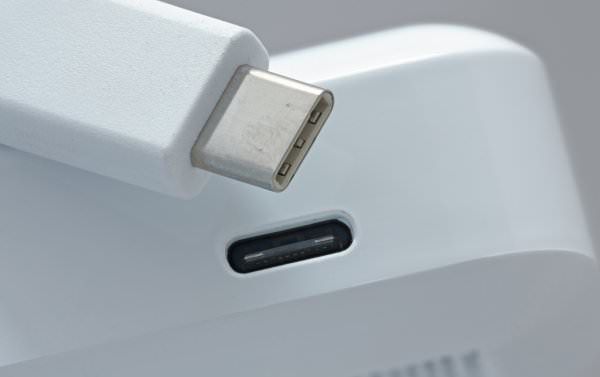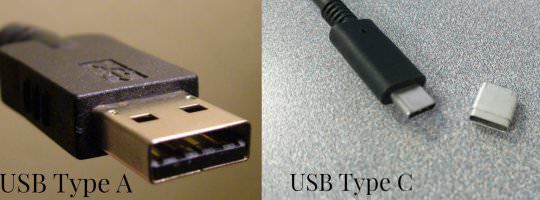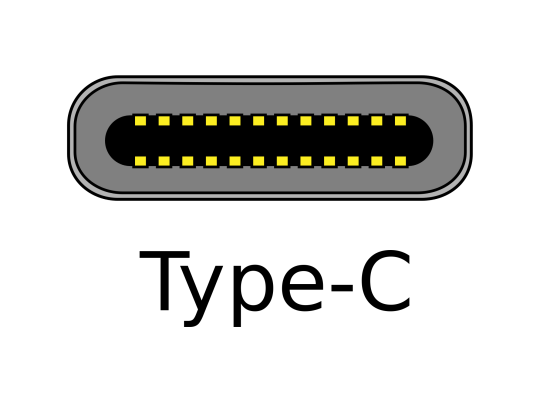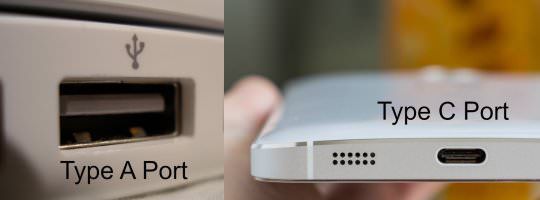
You may have noticed that there’s a new USB type that’s been growing in popularity and availability lately. Over the last two years, USB Type-C has been spreading across the electronics industry. It’s become prominent enough that it’s become the connection type of choice for newer Android smartphones like the Google Pixel and the LG V20. It’s on track to become the industry standard for USB connections in the future.
If you're not an expert on USB devices, it can be hard to understand why this is a big deal. You might think, “USB Type-A, USB Type-C: isn’t it just more of the same?” Not quite. While USB-C has a few things in common with its predecessors, it also features several innovations and technological enhancements that make it an exciting advancement in USB technology. Read on as Premium USB spells out the reasons why USB C is going to be the leader of the pack.
What is USB-C?
USB-C is a new type of connector shape. It’s about a third the size of the old USB Type-A plug, which has been the industry connector standard for years, and is the plug you probably think of when you hear "USB". USB-C was designed to be a more compact version, made to support new USB advancements like USB 3.1 and USB power delivery (USB PD). It also features a reversible cable that makes it much easier to use than older USB models. While the USB-C is designed to support and be compatible with USB 3.1, it doesn’t automatically come with it. It can come with the same underlying technology as USB-A.

USB-C was developed to eventually replace the much-larger USB-A. This is partly due to the rise of mobile devices, which are increasingly more compact. The larger ports required by USB A eventually won’t be supported by most mobile devices. This is why Micro and Mini USB ports have become more common over the years. USB-C is the next step forward- a way of creating a standardized small USB connector/port that can be applied to a wide range of devices.
Design Differences
USB Type A has a blockier design than the flatter Type-C. USB-C is so small that some experts believe it’s being groomed to replace the 3.5mm headphone jack! Companies like Apple have been trying to phase out the headphone jack, because (much like the larger USB A ports) the jack’s larger size makes it difficult to create thinner smartphone designs.

Another innovation behind USB-C’s design is that you don’t have to worry about orienting your cable “the right way” anymore. With your standard USB cables, both ends were different. With USB-C, both ends of the cable feature the same kind of connector. Each end of the cable can easily connect to either your mobile devices or laptop or any other peripherals; no longer will you have to worry about distinguishing between hosts and clients when setting up your cables. USB-C is all one connector!
This reversible function of the USB also has the added benefit of cutting down on the need for adapters. No longer will you have to carry around a handful of adapters to successfully plug in to and charge your various devices.
Next Generation Technology
A distinct advantage that USB-C has over older USB models is that it was designed to utilize recent advancements in USB transfer speed. In our real-world USB 2.0 vs 3.0 speed tests, USB 3.0 performed up to 184% faster than USB 2.0! If you're impressed by the fast-acting 3.0, consider this mind-blowing fact: USB 3.1 is TWICE as fast as 3.0, clocking in at 10 Gbps! However, it's important to keep in mind that just because USB-C supports USB 3.1 doesn’t mean that its underlying technology is 3.1 based. Many USB-Cs are still being made with 2.0 technology standards.
The following YouTube video provides more tests comparing the transfer speeds between USB 3.1, 3.0 and 2.0: https://youtu.be/wi6415OQVpQ?t=4m57s

USB-C is also made to take advantage of USB Power Delivery. USB PD increases power levels from existing USB standards (10W charge) up to 100W! Additionally, the power direction is no longer fixed, enabling either host or peripheral device to provide power when needed. It optimizes your power management across multiple devices by allowing each device to take only the power it requires, prolonging the life of your battery. It streamlines the power process, allowing you to give more power to more peripheral devices at the same time.
Being able to take advantage of USB PD makes USB-C a serious powerhouse. It gives it the ability to offer higher bandwidths, making USB-C ideal for video and high volume data transfers. With its higher charge, USB-C can provide enough power to keep multiple machines running. Instead of needing a rat’s nest worth of tangled cords, one USB-C could handle most (if not all) of your charging needs.
Backward Compatibility
USB 3.0 is backward compatible with older USB types, but USB-C is not. You can’t plug older USB devices into a modern USB-C port, nor can you connect the small USB-C into a larger USB port. There are, however, adapters that help you cross that compatibility bridge.
This subject can get confusing because USB 3.1 technology IS backward compatible with older versions of USB connectors. So while the hardware connectors aren’t compatible with older ports, the modern technology that’s often housed inside it is. On the bright side: most computers will still have both USB A and C ports in the immediate future. It will take some time before the larger ports get phased out entirely, so backward compatibility shouldn’t be an issue.

Availability
One area in which the “classic” USB Type-A has a clear advantage is in sheer ubiquity. While USB-C ports and connectors are being rolled out onto the market and getting adopted by several leading smartphone producers, they still aren’t as commonplace as USB A. It’ll probably take a few more years before the USB-C has officially and completely supplanted A as the connector/port of choice for our electronics. Until then most computer manufacturers will take an integrated approach, offering both Type A and C ports to keep things convenient for their customers.
In Conclusion
While the USB Type A is still the industry standard, it can’t compete with the enhanced, superior qualities of the USB-C. Among those superior qualities are:
- Reduced size
- Faster charging capability
- Power management with USB Power Delivery
- Specifically designed to best utilize the capabilities of USB 3.1 technology
If you’ve got any questions about USB-C, feel free to send us a message. We’d love to tell you more about this groundbreaking development in our industry.
